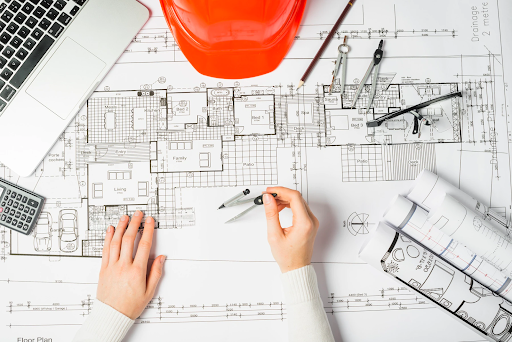Architect Rules for Designing Timeless Interiors
Comprehending the Diverse Profession Paths Available for Aspiring Architect
As an ambitious Architect, you have a world of profession courses waiting for you. Whether you're attracted to conventional style or the subtleties of lasting design, there's a specific niche that lines up with your passions.
Traditional Architecture: Designing Frameworks and structures
Traditional architecture focuses on creating structures and frameworks that mix capability with aesthetic appeal. As you explore this field, you'll appreciate the intricate balance between form and function. You'll discover to draw motivation from historic designs, including components like symmetry, materials, and craftsmanship. Your designs can mirror social heritage, showcasing neighborhood practices while fulfilling modern-day demands.
You'll establish skills in drafting, model-making, and website evaluation, enabling you to imagine and communicate your concepts properly. Involving with clients, you'll require to comprehend their vision and translate it right into possible layouts.
Moreover, building codes and sustainability techniques are crucial in your job, ensuring your frameworks are safe and eco-friendly. As you grow in your job, you'll locate possibilities in property, industrial, and even reconstruction projects, each offering special obstacles. Welcoming traditional architecture leads the way for a satisfying career that pays homage to the past while shaping the future.
Urban Preparation: Shaping Areas and Public Spaces
As a hopeful Architect, you can play a necessary role as a city coordinator, transforming how neighborhoods connect and work. By using community interaction strategies, you'll ensure that residents have a voice fit their setting. Plus, incorporating lasting style concepts will help produce rooms that not only meet today's requirements yet also secure the future.
Duty of Urban Planners
While many could assume of engineers as the sole visionaries behind buildings, city organizers play a necessary function in shaping the broader landscape of communities and public rooms. By working together with different stakeholders, you'll help make parks, transport systems, and household areas that promote social communication and access. Your expertise in spatial layout and neighborhood dynamics permits you to visualize future growth while maintaining cultural heritage.
Area Involvement Techniques
Effective area engagement approaches are crucial for urban organizers to guarantee that the voices of homeowners are heard and valued in the preparation process. To cultivate significant dialogue, you must prioritize open discussion forums and workshops where community participants can express their concepts and concerns. Use studies and social networks to get to a wider audience, making sure diverse perspectives are consisted of. Collaborating with regional organizations can improve trust fund and help with much deeper links. It's crucial to provide clear info concerning proposed jobs and decision-making procedures, permitting citizens to feel enlightened and empowered. By actively incorporating and listening comments, you'll develop spaces that reflect the neighborhood's requirements, inevitably causing even more sustainable and successful metropolitan environments. Welcome transparency and constant dialogue for enduring influence.
Sustainable Design Principles
When creating urban spaces, incorporating lasting style concepts is essential for producing atmospheres that flourish both ecologically and socially. Take into consideration integrating green rooms, like parks and yards, to improve biodiversity and improve air high quality.
Designing with water preservation in mind is additionally key-- consider rainfall yards and permeable surface areas to handle stormwater. Entailing neighborhood members during the preparation process warranties that the areas you produce meet their needs and motivate social communication. By embracing these concepts, you'll add to dynamic, sustainable metropolitan landscapes that profit everyone.

Landscape Architecture: Creating Lasting Outside Environments
As you discover landscape design, you'll discover crucial style principles that develop useful and lovely outside rooms. Lasting practices play a vital role in making certain these environments grow while reducing ecological impact. And also, you'll find a selection of career possibilities that enable you to make a real difference in just how people engage with nature.
Design Principles in Landscape
Recognizing style concepts in landscape architecture is crucial for producing lasting outdoor atmospheres that integrate with nature. You'll need to consider components like scale, percentage, and equilibrium to guarantee your styles feel cohesive and welcoming. Incorporating indigenous plants not just improves biodiversity yet also minimizes water use, making your landscape durable. Think concerning the flow of area and just how individuals engage with it; paths and seating areas must invite expedition and leisure. Additionally, take note of seasonal adjustments, creating with products that match the surroundings year-round (Architect). By prioritizing sustainability and looks, you can produce outdoor spaces that improve the neighborhood and advertise wellness. Accepting these concepts will set a strong foundation for your profession in landscape design.
Sustainable Practices Overview
Sustainable methods in landscape style not just focus on appearances but likewise focus on eco-friendly health and resource conservation. You can create rooms that advertise dirt health, such as exercising and making use of natural materials permaculture principles. Eventually, these methods ensure click for source your layouts profit both people and the environment for years to come.
Profession Opportunities Exploration
With a strong foundation in sustainable methods, landscape design uses a range of occupation courses that permit you to make a purposeful effect on the setting. You can work as a landscape designer, creating aesthetically pleasing and functional outdoor spaces, or specialize in eco-friendly restoration, aiding to revitalize broken environments. Urban organizers commonly work together with landscape designers to produce green spaces in city setups, improving city livability. If you're passionate about education, consider coming to be a landscape design teacher, inspiring future generations. In addition, you may collaborate with nonprofits focused on ecological sustainability or participate in research study to innovate brand-new methods. Each path not just shapes stunning environments yet likewise fosters a much healthier world for future generations.
Sustainable Style: Focusing on Eco-Friendly Practices
As you discover your job in design, welcoming green methods can establish you apart in a competitive field. Lasting design concentrates on producing structures that minimize ecological influence while enhancing resident well-being. By integrating eco-friendly materials, energy-efficient systems, and sustainable structure strategies, you'll add to a greener future.
Begin by getting expertise of eco-friendly qualifications like LEED or BREEAM, which can bolster your credentials. Think about exactly how all-natural light, air flow, and thermal efficiency can optimize design. Work together with designers and ecological professionals to introduce solutions that decrease waste and save resources.
Don't fail to remember the importance of neighborhood participation-- interesting local stakeholders can influence styles that integrate with the setting. As clients significantly focus on sustainability, your experience in environmentally friendly methods will not only attract projects but also fulfill your passion for responsible architecture. Welcome this crucial aspect of the career, and see your job prosper.
Historical Preservation: Safeguarding and Restoring Cultural Heritage
While you start on your building journey, consider the important role of historical conservation in preserving our social heritage. This field concentrates on the protection and reconstruction of substantial buildings, sites, and frameworks that inform the stories of our past. By participating in historical preservation, you'll help guard the architectural legacy that forms neighborhood identity.
As a historic conservation Architect, you'll evaluate historic importance and assess the problem of frameworks. You'll work very closely with guardians and chroniclers to guarantee genuine restoration methods are employed. This profession course allows you to mix creativity with research study, allowing you to develop remedies that respect initial products and craftsmanship.
Your job not just contributes to sustainability by reusing existing buildings however also promotes a feeling of satisfaction within neighborhoods. Accepting this course will aid you become a guardian of history, protecting the tales and looks that enrich our lives.
Interior Design: Enhancing Indoor Spaces
Historical conservation and interior architecture both share a commitment to boosting the constructed environment, however they concentrate on various aspects. While historic preservation highlights preserving a structure's historical and social value, indoor architecture zeroes in on maximizing indoor areas for functionality and visual appeals.
As an ambitious Architect, you'll locate that indoor design permits you to blend creativity with technical skills. You'll make spaces that not just look good but likewise advertise convenience and effectiveness. This field includes recognizing exactly how light, shade, and materials connect within a space, influencing mood and usability.
You'll service various tasks, from household homes to commercial offices, guaranteeing that each environment fulfills the requirements of its occupants. By prioritizing customer experience, you can change insides into useful and inspiring rooms, making a significant influence on how individuals interact with their surroundings. Accept the chance to enhance indoor atmospheres and form the means people work and live.
Industrial Design: Combining Functionality With Aesthetics
Industrial style plays a necessary role in developing items that effortlessly mix looks with capability, making sure that what you make use of everyday is not just visually enticing however likewise functional. As an ambitious Architect, you might involve on your own in this field, concentrating on making everything from furnishings to consumer electronics. Your job includes recognizing individual demands, materials, and producing procedures, permitting you to develop have a peek at this site cutting-edge remedies that enhance my response daily experiences.
In commercial style, you'll typically collaborate with suppliers, engineers, and marketing professionals, making sure that your layouts are not just stunning however also viable. You'll find out to stabilize kind and function, prioritizing functionality without compromising style. By honing your abilities in sketching, 3D modeling, and prototyping, you'll be fully equipped to bring your ideas to life. This profession course uses a dynamic setting where creativity meets functionality, making it a rewarding selection for engineers thinking about shaping the items of tomorrow.
Regularly Asked Questions
What Educational Qualifications Do I Need to Become an Architect?
To come to be an architect, you'll need a professional level in architecture, typically a Bachelor's or Master's. Furthermore, you'll have to finish an internship and pass the Architect Enrollment Evaluation to exercise lawfully.
Are There Certification Demands for Different Building Job Paths?
Yes, there're certification requirements for various building paths. Architect. You'll require to pass tests, complete internships, and often go after specialized training, relying on your selected emphasis, like landscape architecture, metropolitan layout, or historical conservation
What Software Program Skills Are Essential for Engineers Today?

Exactly How Can I Gain Practical Experience While Researching Style?
You can gain functional experience by interning at architectural companies, joining design competitors, volunteering for community tasks, or collaborating with classmates on real-world jobs. These possibilities enhance your skills and construct important connections in the sector.
What Work Opportunities Exist Outdoors Typical Style Firms?
You can discover various task opportunities outside traditional style firms, like urban preparation, interior decoration, landscape design, building monitoring, realty development, or also roles in sustainability consulting. Each offers unique difficulties and incentives.
Whether you're attracted to standard architecture or the subtleties of lasting style, there's a niche that straightens with your passions.When designing city areas, incorporating lasting style principles is crucial for developing environments that thrive both environmentally and socially.As you explore landscape architecture, you'll uncover crucial style concepts that produce attractive and functional outdoor spaces.Recognizing layout concepts in landscape design is necessary for producing sustainable outside atmospheres that harmonize with nature.In industrial design, you'll often work together with marketing experts, manufacturers, and engineers, guaranteeing that your designs are not just gorgeous however also feasible.